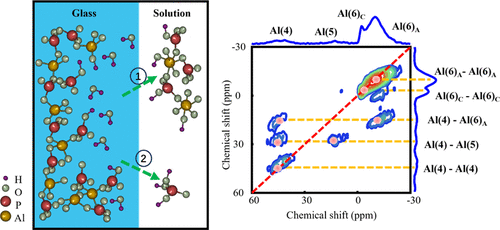
A Progress in Understanding the Corrosion Mechanism of Alkali Aluminophosphate Glass
Recently, the Advanced Laser and Optoelectronic Functional Materials Department of the Shanghai Institute of Optics and Fine Mechanics has made significant progress in understanding the corrosion mechanism of alkali aluminophosphate glass. The research reveals the dissolution process of the glass in aqueous solution and the formation mechanism of the surface crystal layer. The related findings were published in The Journal of Physical Chemistry C under the title "Formation Mechanism of Crystalline Phase during Corrosion of Aluminum Phosphate Glasses."
Alkali aluminophosphate glass has important applications in the solidification of nuclear waste glass and other fields. A deep understanding of its chemical stability is crucial for its effective application. To achieve this, it is essential to understand the chemical corrosion mechanism of the glass. While the study of glass corrosion mechanisms has a long history, numerous controversies persist. Previous research has predominantly focused on borosilicate glass, with comparatively less attention given to understanding the corrosion mechanism of phosphate glass.
In this study, researchers utilized various advanced nuclear magnetic resonance techniques to analyze the atomic-scale structure of the aluminophosphate glass before and after corrosion. They identified two distinct dissolution modes of the Q1 and Q0 units within the glass in aqueous solution. Furthermore, they also confirmed that the crystal layer on the surface of phosphate glass originates from the dissolution of glass components followed by the precipitation on the glass surface. These findings contribute to a deeper understanding of the chemical stability of alkali aluminophosphate glass.
This work was supported by the China National Project titled, “Development and Verification of Two-Step Cold Crucible Vitrification Engineering-Scale Prototype” (grant no. FKY1683ZHG001SSJS-B01-001)

(a) Dissolution modes of glass network. (b) 27Al{27Al} 2D WURST 2Q-1Q spectrum of the corroded glass.
Article website: https://doi.org/10.1021/acs.jpcc.3c08405